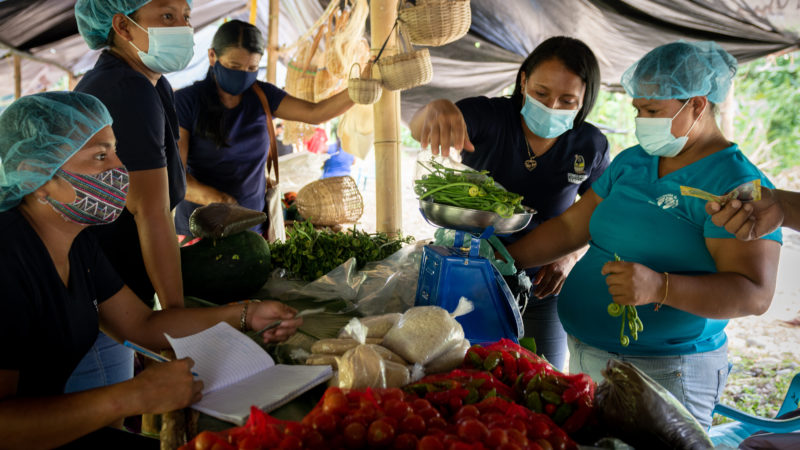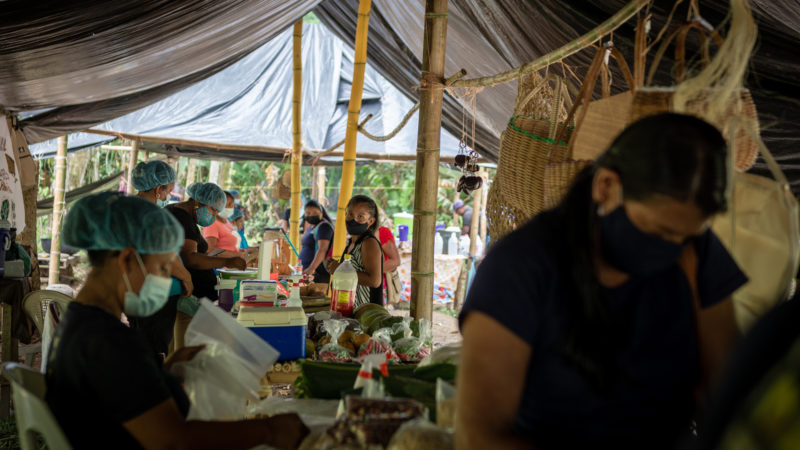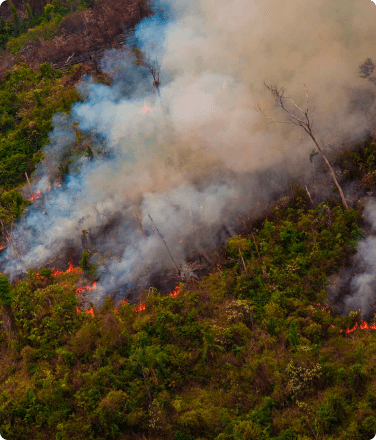Produced in collaboration with the Mesoamerican Alliance of Peoples and Forests (AMPB)
- The Mesoamerican Territorial Fund (FTM) will bring needed resources to indigenous and local rainforest communities from Mexico to Panama.
- There are more than 170,000 square miles of forests on indigenous peoples’ territories in Mesoamerica, an area larger than California.
- The fund could help channel some of the $1.7 billion pledged to communities by major donors at Glasgow in 2021.
- Studies show that indigenous peoples and local communities are extremely effective at defending rainforests, but that they are severely underfunded.
- The FTM will be ready to receive donations by the end of 2022.
More and more, experts agree: indigenous peoples are the world’s best protectors of rainforests. And so one of the most cost-effective ways of protecting the forest is giving resources directly to indigenous communities on the front lines of the rainforest’s destruction.
But it’s not like these villages have Venmo. And even if they did, this isn’t a problem that can be solved by small donations alone. Indigenous peoples and other vulnerable, forest-dependent communities (referred to in the field as “local communities”) need substantial investment—from federal governments to international financial institutions like the World Bank. But if these communities don’t have traditional pathways to receive, process, and report funding, these major donors won’t open their pocketbooks.
That’s a problem that Gustavo Sanchez, board chairman of the Mesoamerican Alliance of Peoples and Forests (AMPB), is trying to solve. AMPB works throughout Mesoamerica—a geographic area that extends from Mexico to Panama—serving as an international advocacy organization for regionally led indigenous and local peoples’ organizations contained therein. Last year, AMPB and Rainforest Foundation US (RFUS) were jointly awarded a $2 million USAID federal grant to deepen AMPB’s work. Amongst other things, the grant, which will begin activities this year, will lay the groundwork for the Mesoamerican Territorial Fund (FTM is the acronym in Spanish), which aims to more effectively channel major financial support for rainforest protection to those communities who can put it to best use.
“We’re going to be a bridge,” Sanchez explains. “Making the bridge correctly is important. On the one hand, certain donors have requirements that they need to see met before they give. But on the other hand, if the money is too many steps removed from the communities, then too much of it gets lost along the way.”
An Answer for Climate Change

Studies like this one consistently show that indigenous and local peoples regularly protect their rainforests better than all other public and private entities, including national parks services. With the climate crisis inextricably linked to deforestation (and the United Nations forecasting ecological collapse and devastation to human life unless drastic action is taken), it’s clear that getting resources to indigenous peoples’ and local communities’ forest defense programming is a vital cost-effective method for protecting the planet’s health. As such, several federal governments and major private funders at the United Nations’ annual climate summit “COP26” made a $1.7 billion pledge to support indigenous and local communities in securing their land tenure. Those funds are to be disbursed between 2021 and 2025, but the mechanisms through which those will be channeled are as yet undefined.
But it still remains to be seen how effectively that money will be distributed. A study published earlier that year by our sister organization Rainforest Foundation Norway found that over the last ten years, less than 1% of climate change mitigation and adaptation funding has gone to these forest communities—despite the fact that they can offer such promising returns on investment.
“We’re going to be a bridge… On the one hand, certain donors have requirements that they need to see met before they give. But on the other hand, if the money is too many steps removed from the communities, then too much of it gets lost along the way.”
— Gustavo Sanchez, Board Chairman of AMPB
Financing mechanisms like the FTM are a key step in getting resources where they need to go. The FTM will operate as an international legal entity, funding projects throughout Mesoamerica, a region rich with tropical forests held by indigenous peoples. According to a United Nations report, there are more than 170,000 square miles (44.1 million hectares) of forests in indigenous and local peoples’ territory in Mesoamerica—a collective area 10% larger than California. But illegal deforestation is also rampant in the region, with cattle ranching and palm oil plantations leading drivers of forest loss. According to the United States Fish and Wildlife Service, invaders are disproportionately targeting indigenous and local peoples’ territories—illustrating just how important it is to strengthen territorial rights within these communities.
Learn more about the link between climate change and land rights here.
The Challenge for the Future

Sanchez sees the fund as a potentially game-changing operation. He says his best-case scenario outlook is an annual budget of “close to $100 million by 2030.”
“We’re imagining a consolidated financing mechanism in Latin America that will have a substantive impact on these territories,” says Sanchez. “That is to say: We are going to help both conserve a massive amount of forests, and raise the standard of living for the indigenous peoples and local communities who are there.”
But in order for that vision to be realized, Sanchez has to make sure that the next steps AMPB takes are the right ones. At time of publication, the organization was debating which Mesoamerican country to legally register the fund in. Anticipating that that decision will be made by May 2022, Sanchez said that he expects the fund’s set-up will take an additional 3-6 months, opening it for donations by the end of the calendar year.
That timeline would allow the fund to receive, amongst other things, resources from that COP26 $1.7 billion pledge. The FTM is one of several regional financial mechanisms being launched by indigenous peoples’ and local community organizations to address inequality in climate finance. Funds like the FTM are part of a new generation of “direct access” financial intermediaries, controlled directly by indigenous peoples and local communities. This new “ecosystem” of financial institutions being promoted by the Global Alliance of Territorial Communities is also referred to as the Shandia mechanism.
Direct Finance to the Ground

Once the fund is operational, Sanchez says that projects will be chosen that support indigenous peoples’ and local communities’ territorial security, with projects prioritized based on how strongly they adhere to three core principles: the strengthening of regional organizations; human rights legal aid work; and the supporting of local economies. Seed money for the fund, including some initial pilot projects, was provided by the Ford Foundation and the Climate and Land Use Alliance (CLUA).
All of the AMPB’s member organizations have prepared projects for financing, with many, such as the Bribri and Cabecar Indigenous Network (RIBCA) in Costa Rica and the Federation of Producers and Agroforesters of Honduras (FEPROAH), focusing on supporting community businesses with training, legal assistance, investment, and re-establishing market linkages in the post-COVID economic reactivation. Others, such as the Mexican Network of Rural Forest Organizations (Red Mocaf) in Mexico and the Pueblo Mayagna in Nicaragua focus on training, leadership development, and organizational strengthening for national policy advocacy.
As a partner of the grant, RFUS is providing financing as well as ongoing technical assistance to the leadership of AMPB to institutionalize the fund. Activities under the grant include securing the legal recognition for the fund, formalizing its internal governance and administrative capacity, and conducting outreach to meet the fund’s capitalization targets.
Sanchez hopes that strong pilot programs in the fund’s first year can have a cascading effect with national governments, inspiring public financing and investment from the private sector for communities that too many nation-states have been historically hesitant to offer.
“We’re going to show them that things can be done in a different way,” Sanchez says. “Success stories can move government actors. We want to generate examples: to show them that their investment in us is a secure one. That when they give to us, they’re going to get results back.”



